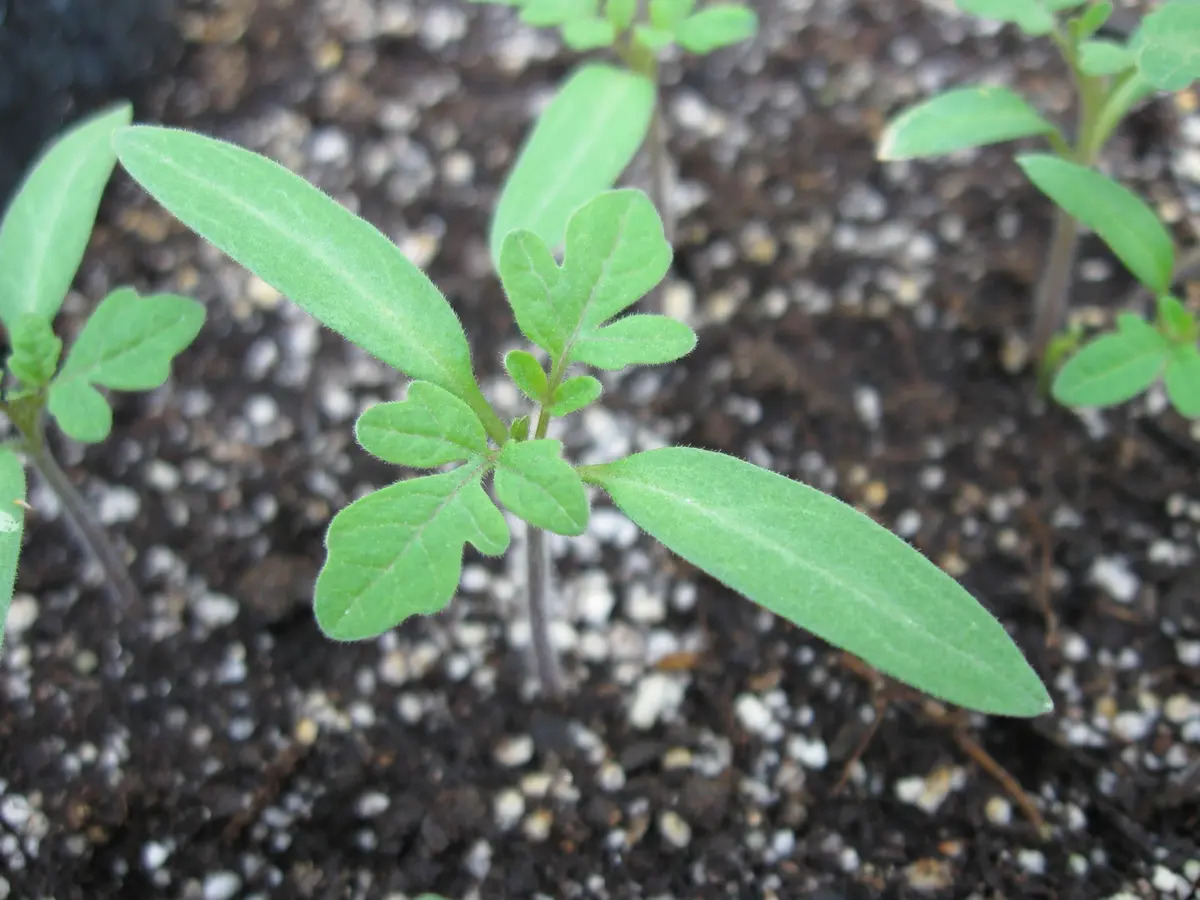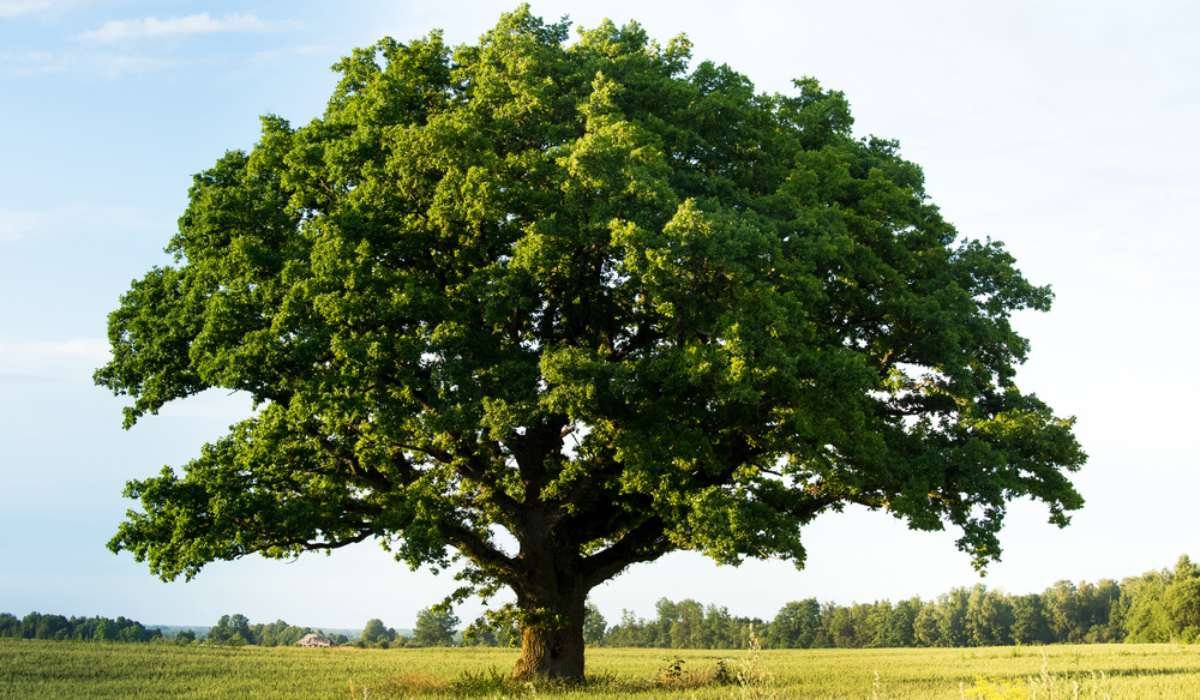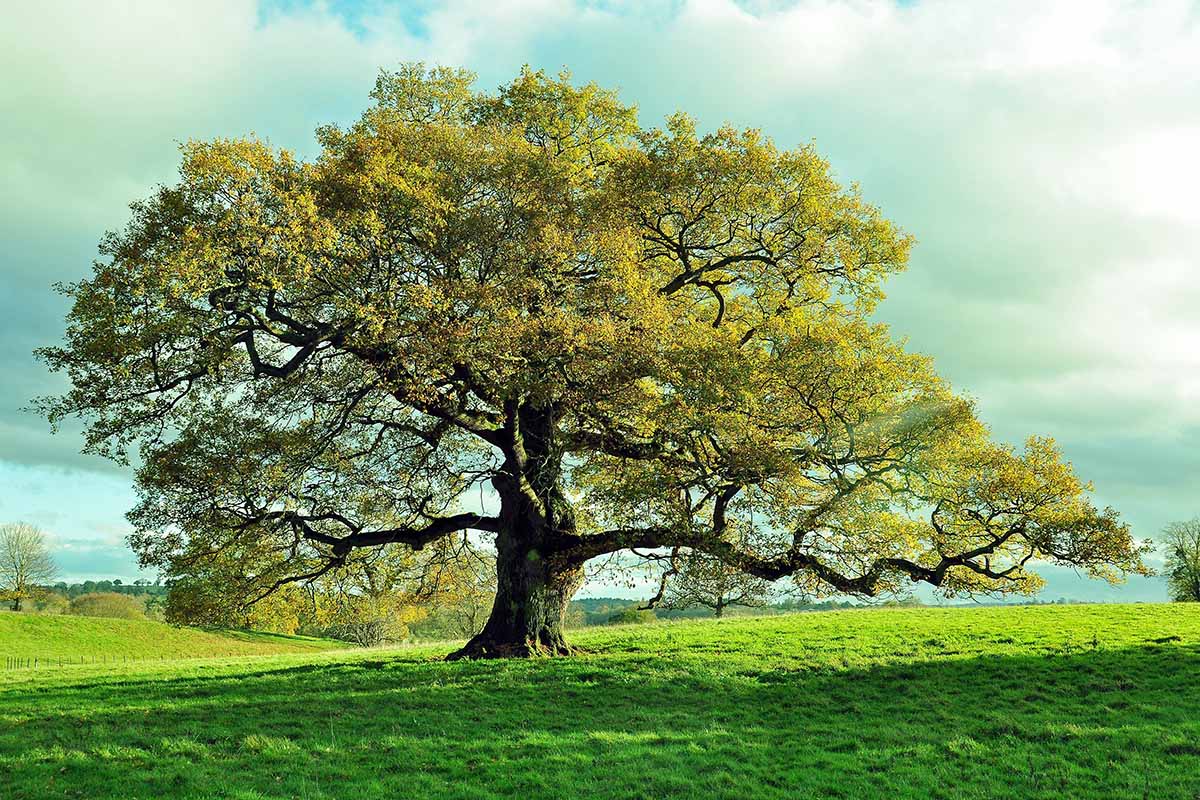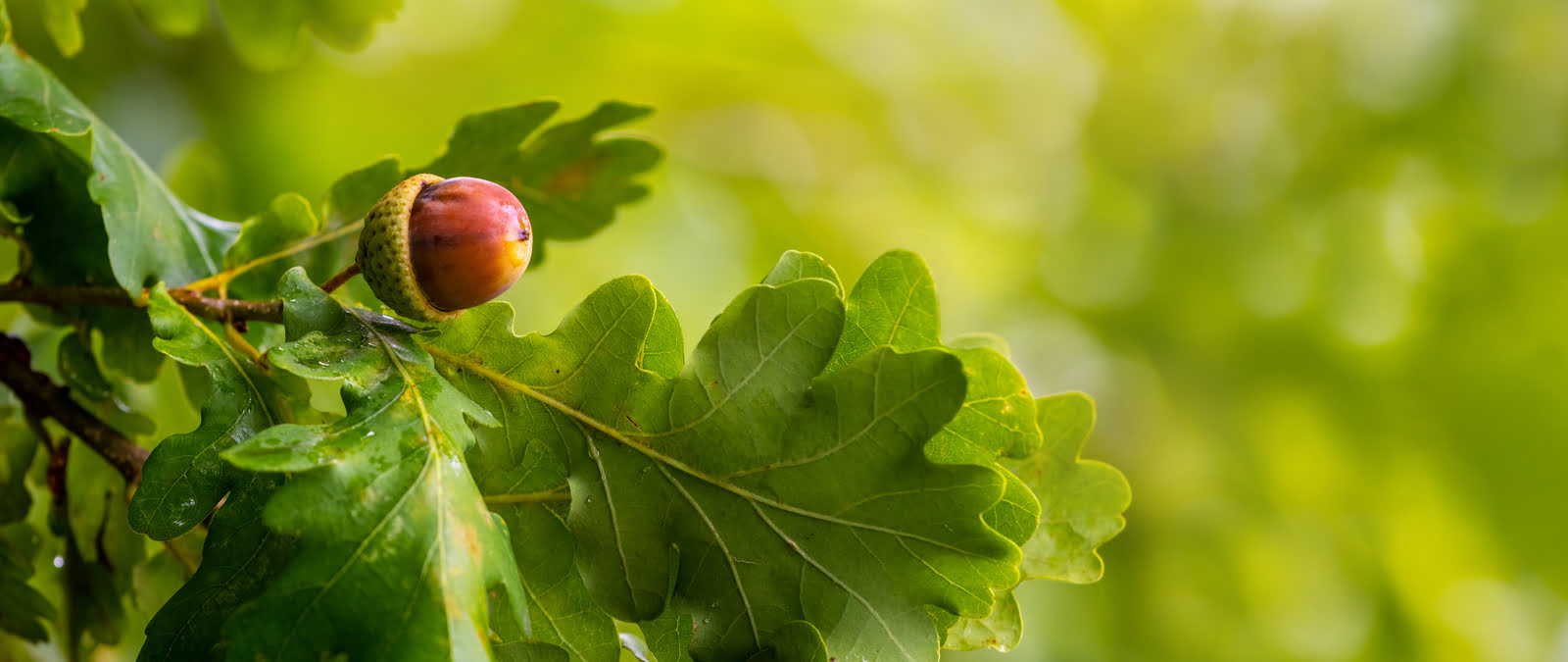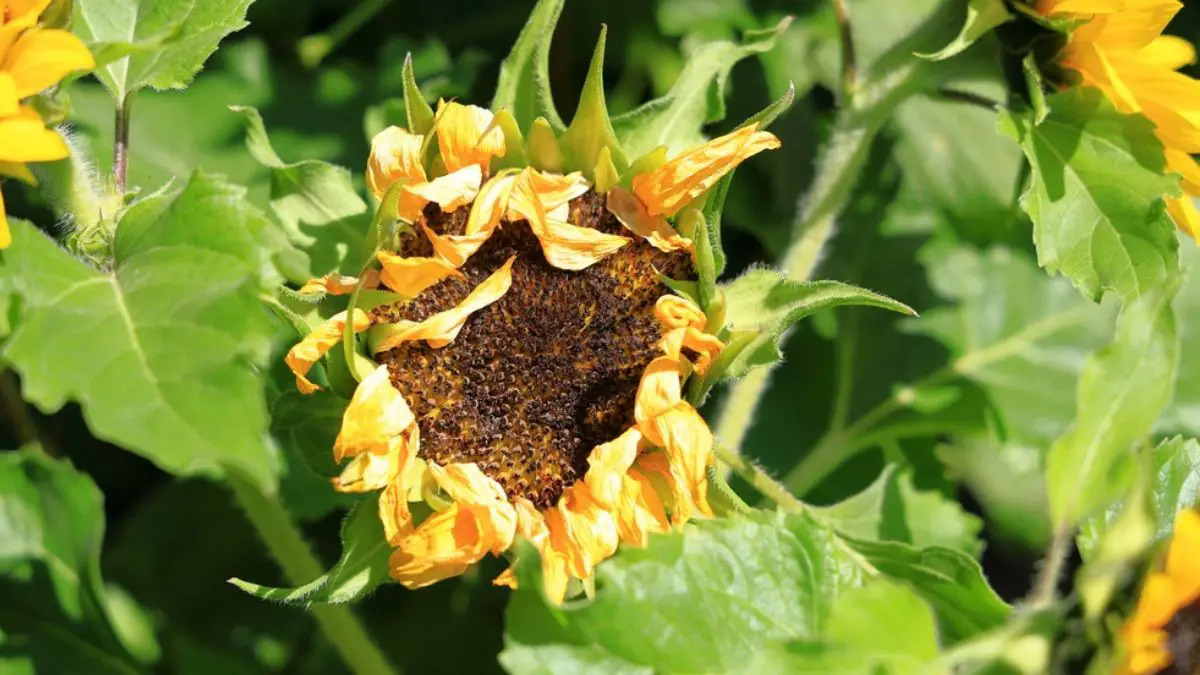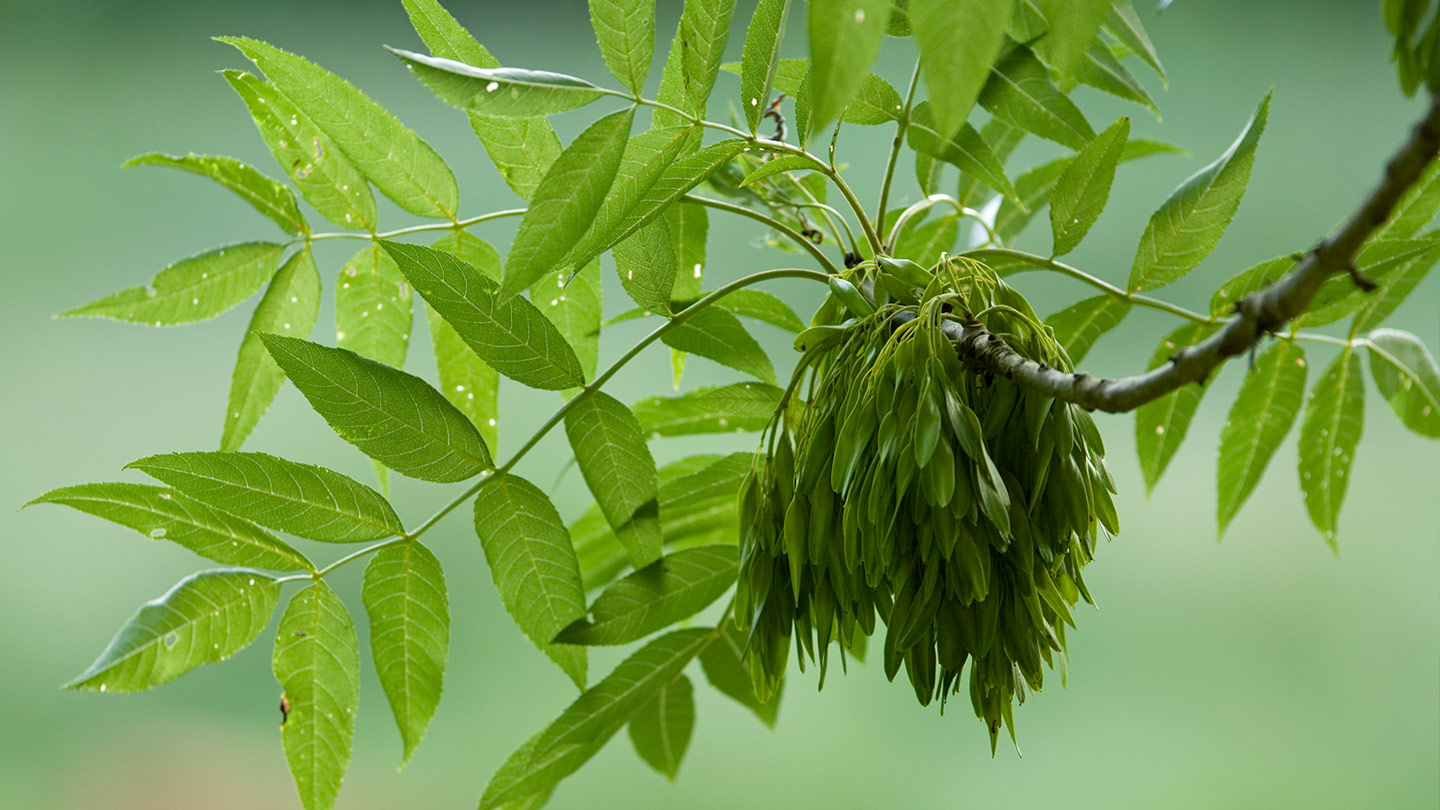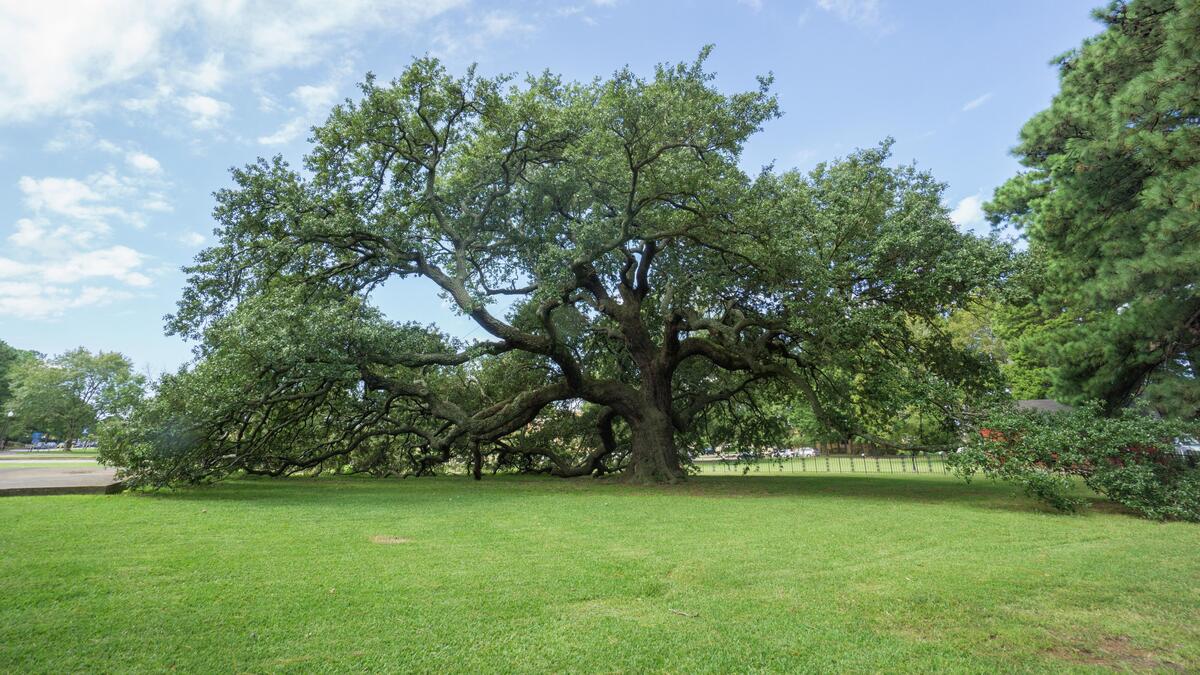Home>Gardening Techniques>Seasonal Gardening>When Do Oak Trees Lose Their Leaves
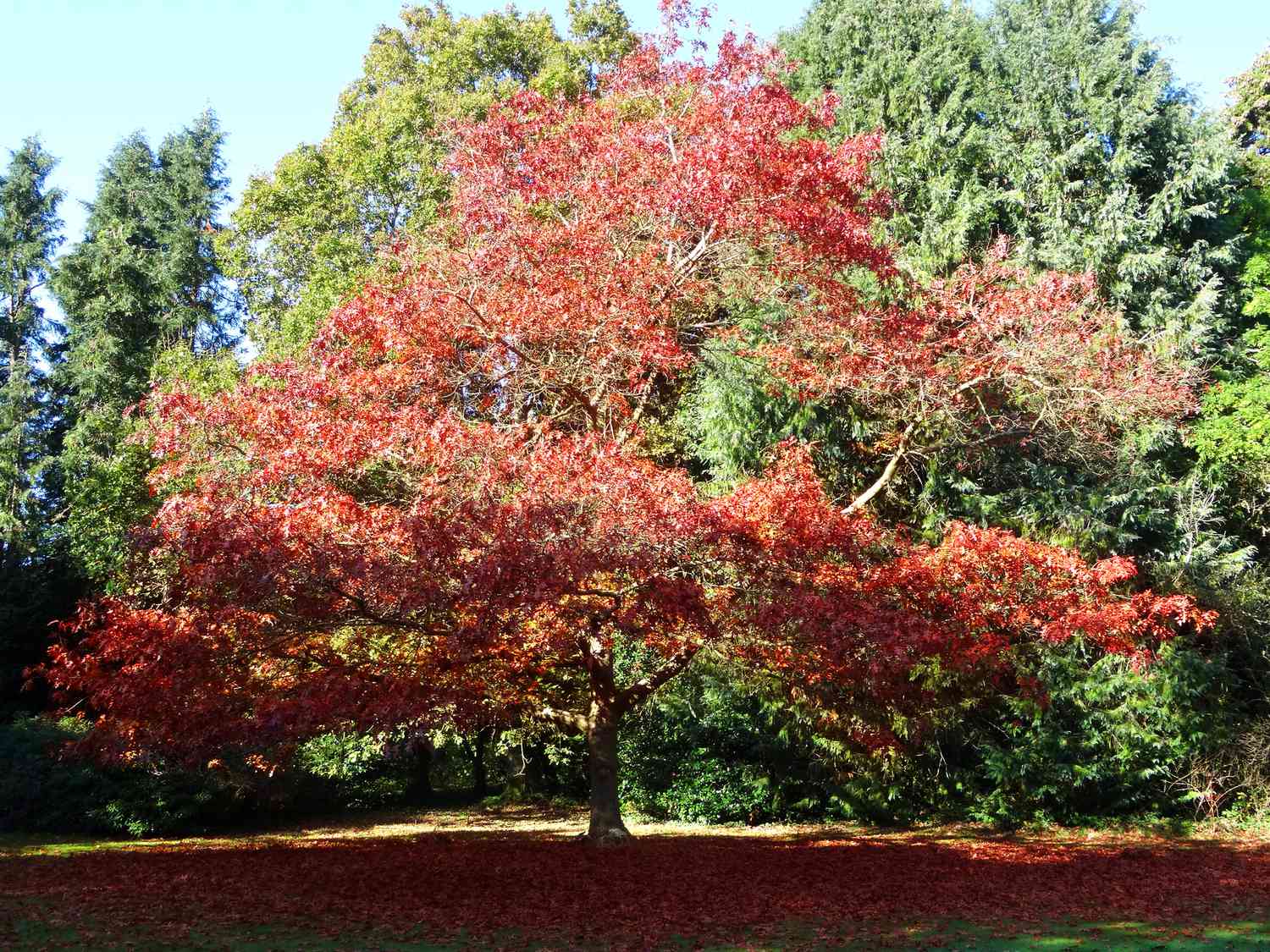

Seasonal Gardening
When Do Oak Trees Lose Their Leaves
Modified: January 22, 2024
Learn about the seasonal gardening aspect of oak trees as we explore when they lose their leaves.
(Many of the links in this article redirect to a specific reviewed product. Your purchase of these products through affiliate links helps to generate commission for Chicagolandgardening.com, at no extra cost. Learn more)
Table of Contents
Introduction
Welcome to the fascinating world of seasonal gardening! One of the most intriguing aspects of gardening is observing and understanding the changes that occur throughout the year. As we delve into the topic of when oak trees lose their leaves, we will explore the factors that influence this phenomenon and the impact it has on the surrounding environment.
Oak trees, belonging to the genus Quercus, are known for their majestic presence and provide numerous benefits to ecosystems and wildlife. They are deciduous trees, meaning they shed their leaves in response to changes in environmental conditions. Leaf fall in oak trees is not only a seasonal occurrence but also a vital process for the overall health and survival of these magnificent plants.
In this article, we will delve into the various factors that influence the timing of leaf loss in oak trees, such as temperature, photoperiod, hormonal changes, and environmental stressors. By understanding these factors, you will gain valuable insights into the natural rhythm of oak trees and their interactions within their surroundings.
Whether you are a seasoned gardener, a nature enthusiast, or simply curious about the natural world, the information shared in this article will help you expand your knowledge and appreciation for oak trees.
So, let us embark on this journey of exploration, as we uncover the secrets of when oak trees lose their leaves!
Factors Affecting Leaf Loss in Oak Trees
For oak trees, the timing of leaf loss is influenced by a variety of factors, including temperature, photoperiod, hormonal changes, and environmental stressors. Let’s take a closer look at each of these factors:
1. Temperature and Seasonal Changes: Oak trees respond to changes in temperature as a signal to initiate leaf loss. As the days grow shorter and temperatures drop, oak trees begin to enter a dormant phase. This triggers physiological changes within the tree, leading to the detachment and shedding of leaves. While different species of oak trees may have varying tolerance levels for cold temperatures, it is generally the combination of lower temperatures and shorter days that prompt them to shed their leaves.
2. Photoperiod and Day Length: The length of daylight hours, also known as the photoperiod, plays a crucial role in regulating leaf loss in oak trees. As autumn approaches and the days become shorter, the decrease in daylight triggers a biochemical process within the tree. This process involves the production of abscisic acid, a hormone that promotes leaf senescence and eventual leaf loss. The declining photoperiod serves as a signal for the tree to prepare for the winter months by shedding its leaves.
3. Hormonal Changes and Leaf Senescence: Hormonal changes occur within oak trees as they transition from active growth to dormancy. The reduction in the production of growth hormones, such as cytokinins, and the increase in the production of senescence-promoting hormones, such as ethylene and abscisic acid, contribute to leaf senescence. These hormonal changes trigger a cascade of physiological processes that lead to the breakdown of chlorophyll and the eventual shedding of leaves.
4. Environmental Stressors: Oak trees are influenced by various environmental stressors that can impact the timing of leaf loss. Drought conditions, excessive heat, and nutrient deficiencies can accelerate leaf senescence and cause premature leaf drop. On the other hand, mild and consistent environmental conditions can prolong the retention of leaves. Additionally, pests and diseases can also stress oak trees, resulting in leaf loss as a defense mechanism or due to the damage inflicted by these factors.
Understanding the intricate interplay of these factors is essential for predicting when oak trees will lose their leaves. These natural processes not only contribute to the beauty of autumn landscapes but also have wider implications for ecosystems and wildlife.
Now that we have explored the factors that influence leaf loss in oak trees, let’s dive deeper into the specific timing variations among different oak tree species.
Temperature and Seasonal Changes
Temperature plays a crucial role in determining the timing of leaf loss in oak trees. As the seasons transition from summer to autumn, the gradual decrease in temperatures acts as a signal for oak trees to prepare for the colder months ahead.
As temperatures drop, the metabolic activities within the tree slow down, leading to the production of specialized cells at the base of the leaf stalk. These cells, known as the abscission zone, weaken the connection between the leaf and the tree, eventually causing the leaf to detach and fall.
Different species of oak trees have varying degrees of tolerance to cold temperatures. Some species, such as the White Oak (Quercus alba) and the Bur Oak (Quercus macrocarpa), can withstand colder temperatures and retain their leaves well into late autumn. On the other hand, species like the Red Oak (Quercus rubra) and the Pin Oak (Quercus palustris) are more sensitive to temperature changes and tend to shed their leaves earlier in the season.
In regions with milder climates, where temperatures remain relatively stable throughout the year, oak trees may retain their leaves for a longer duration. However, in colder regions, where temperatures plummet below freezing in winter, oak trees shed their leaves relatively early to conserve energy and protect themselves from freezing temperatures.
Interestingly, some oak trees exhibit a phenomenon known as “marcescence,” where a portion of their leaves remains attached to the tree throughout the winter months. This occurs particularly among certain oak species, such as the Northern Red Oak (Quercus rubra) and the European Oak (Quercus robur). The exact reason for marcescence is not entirely understood, but it is thought to provide some protection against browsing by herbivores.
Overall, the temperature and seasonal changes play a significant role in determining when oak trees lose their leaves. The combination of decreasing temperatures and the physiological responses within the tree signal the onset of leaf detachment, leading to the stunning displays of autumn foliage that we so often admire.
Photoperiod and Day Length
Photoperiod, or the length of daylight, is another critical factor influencing leaf loss in oak trees. As summer transitions into autumn, the days gradually become shorter, signaling to the oak tree that it is time to prepare for the upcoming winter.
The decrease in daylight triggers a biochemical process within the tree that leads to the initiation of leaf senescence. This process involves the production of a hormone called abscisic acid, which promotes the breakdown of chlorophyll and the eventual detachment of leaves from the tree.
Each oak tree species has a specific photoperiod threshold at which it initiates leaf loss. For instance, the Pin Oak (Quercus palustris) and the Red Oak (Quercus rubra) are considered short-day plants. These species require shorter day lengths to trigger the leaf senescence process. Therefore, they tend to shed their leaves earlier in the autumn when the days are still relatively long.
In contrast, the White Oak (Quercus alba) and the Bur Oak (Quercus macrocarpa) are long-day plants. These species need longer daylight hours before they start the process of leaf senescence. Consequently, these oak trees tend to retain their leaves for an extended period, shedding them later in the autumn when the days are shorter.
It is worth noting that while photoperiod is a significant factor in determining leaf loss, it can be influenced by other environmental factors as well. For example, extreme weather events or cloud cover can impact the amount of light received by the tree, potentially altering the timing of leaf senescence.
The interplay between photoperiod and day length is a beautiful testament to the intricate relationship between plants and their surrounding environment. It is this delicate balance that provides the cues for oak trees to shed their leaves and prepare for the dormant winter months.
Hormonal Changes and Leaf Senescence
Hormonal changes play a pivotal role in the process of leaf senescence, leading to the eventual shedding of leaves in oak trees. During this intricate biological process, various hormones within the tree interact and regulate the onset and progression of leaf loss.
As the days become shorter and temperatures drop, oak trees undergo a transition from active growth to dormancy. This transition is marked by a decrease in the production of growth hormones, such as cytokinins, and an increase in the production of senescence-promoting hormones, such as ethylene and abscisic acid.
The decline in cytokinin levels initiates biochemical changes within the tree, triggering the breakdown of chlorophyll, which is responsible for the green color of leaves. As chlorophyll breaks down, other pigments, such as carotenoids and anthocyanins, become more prominent, creating the vibrant colors characteristic of autumn foliage.
A critical hormone involved in leaf senescence is abscisic acid. As temperatures drop and the days become shorter, the tree produces increased levels of abscisic acid in response to these environmental cues. Abscisic acid promotes the detachment of leaves by signaling the abscission zone to weaken the connection between the leaf stalk and the tree.
The hormonal changes within the tree not only trigger leaf senescence but also serve to allocate valuable resources. As winter approaches, the tree reabsorbs nutrients from the leaves and transports them to other parts of the tree for storage. This allows the tree to conserve energy and nutrients during the dormant period.
It is important to note that the hormonal changes and leaf senescence process can vary among different oak tree species. Some species may exhibit a more gradual and prolonged leaf loss, while others may undergo a relatively rapid shedding of leaves.
The intricate interplay of hormones within oak trees during leaf senescence is a marvel of nature. It is through this process that oak trees prepare themselves for dormancy, conserve resources, and ensure their survival during the harsh winter months.
Environmental Stressors
While temperature and photoperiod are important factors influencing leaf loss in oak trees, environmental stressors can also play a significant role in determining the timing and extent of leaf shedding.
Drought conditions and excessive heat can cause oak trees to undergo stress, leading to premature leaf loss. When water is scarce, trees prioritize their survival by shedding leaves to reduce water loss through transpiration. This self-preservation mechanism allows the tree to conserve water and redirect resources to more critical parts, such as the roots.
Nutrient deficiencies can also impact leaf senescence in oak trees. Insufficient nutrients, particularly nitrogen, can accelerate the breakdown of chlorophyll and hasten leaf loss. Conversely, adequate nutrient availability can prolong leaf retention and delay the onset of leaf senescence.
Insect pests and diseases can inflict stress on oak trees, affecting their overall health and triggering leaf loss. Pests like oak gall wasps or fungal diseases such as oak wilt can cause damage to the leaves and disrupt normal physiological processes. In response, the tree may shed affected leaves as a defense mechanism to limit the spread of pests or diseases.
Additionally, extreme weather events such as storms or strong winds can physically damage the leaves and branches of oak trees. In such cases, the tree may shed damaged leaves to focus its resources on repairing and regenerating new growth.
It is important to note that while oak trees are resilient and adapt to various environmental stressors, prolonged or severe stress can have negative consequences. Chronic drought or repeated defoliation due to pests or diseases can weaken the tree and make it more susceptible to further damage or even mortality.
Understanding the impact of environmental stressors on leaf loss in oak trees is crucial for assessing the health and resilience of these magnificent organisms. By monitoring and mitigating stressors, we can help preserve the beauty and vitality of oak tree populations for generations to come.
Oak Tree Species Variation in Leaf Loss
While all oak trees share the characteristic of being deciduous, there is a remarkable variation in the timing and pattern of leaf loss among different oak tree species. Factors such as genetics, habitat, and ecological adaptations contribute to this variation.
Some oak tree species, such as the Pin Oak (Quercus palustris) and the Red Oak (Quercus rubra), tend to shed their leaves relatively early in the autumn season. These species are considered to have a shorter leaf retention period compared to others. The leaf loss in these early shedding species is often influenced by the combination of temperature, photoperiod, and environmental stressors such as drought or pests.
On the other hand, certain oak tree species, like the White Oak (Quercus alba) and the Bur Oak (Quercus macrocarpa), exhibit a longer leaf retention period. These species tend to shed their leaves later in the autumn or even retain some leaves through the winter months. Their ability to hold onto leaves for a more extended period can be attributed to genetic factors, particularly their adaptation to variable climates or specific ecological niches.
Oak tree species that generally have a longer leaf retention period may provide additional benefits to wildlife and ecosystems. These trees may offer a more prolonged period of food and shelter for animals, as well as contribute to the overall biodiversity of an area. Furthermore, the retention of dry, withered leaves during the winter can provide a protective layer, insulating the base of the tree and facilitating nutrient recycling within the ecosystem.
It’s important to note that the variation in leaf loss among oak tree species is not solely determined by genetics. Environmental factors, such as local climate conditions and habitat characteristics, can influence the specific timing and duration of leaf shedding for each species in a particular region.
Studying these variations in leaf loss patterns among oak tree species allows us to gain a deeper understanding of their ecological roles and adaptability. It highlights the complexity and diversity of the oak family, with each species uniquely fitting into the tapestry of the natural environment.
Implications for Wildlife and Ecosystems
The timing of leaf loss in oak trees has significant implications for wildlife and ecosystems, as it directly impacts the availability of resources and influences various ecological processes.
One of the key implications is the availability of food for wildlife. Oak trees, throughout the growing season, produce a bounty of acorns, which serve as a crucial food source for many animal species. The timing of leaf loss influences the dispersal and accessibility of acorns. For species that rely on acorns as a primary food source, such as squirrels, deer, and birds, the synchronization of leaf loss and acorn production is vital for their survival and reproductive success.
In addition to food, the timing of leaf loss also affects the availability of nesting and roosting sites for birds. Oak trees, with their sturdy branches and dense foliage, provide excellent habitats for nesting and shelter. The shedding of leaves creates open spaces and perch sites, allowing for easier construction of nests and enhancing visibility for predatory birds hunting for prey.
The fallen leaves from oak trees also contribute to nutrient cycling and soil fertility. As the leaves decompose, they release essential nutrients back into the soil, providing nourishment for other plants and microorganisms. This process enhances soil health and fosters a diverse ecosystem of soil-dwelling organisms, contributing to overall ecological resilience.
Furthermore, the timing of leaf loss influences the microclimate within the forest. In early autumn, when leaves start to fall, more sunlight reaches the forest floor. This increased light availability stimulates the growth of understory vegetation, which provides additional food and cover for wildlife. Moreover, the leaf litter on the forest floor acts as an insulating layer, protecting the soil and the root systems of plants during the winter months.
Overall, the timing of leaf loss in oak trees plays a critical role in shaping the dynamics of wildlife populations and the functioning of ecosystems. The interconnection between vegetation, wildlife, and nutrient cycles highlights the delicate balance and intricate relationships within natural systems.
Conclusion
Understanding when oak trees lose their leaves is not only a fascinating aspect of seasonal gardening but also provides valuable insights into the natural world. The factors influencing leaf loss in oak trees, such as temperature, photoperiod, hormonal changes, and environmental stressors, work in harmony to regulate this vital process.
Temperature and seasonal changes act as signals for oak trees to enter a dormant phase, triggering the detachment and shedding of leaves. Photoperiod, or the length of daylight, plays a crucial role in initiating leaf senescence by influencing the production of hormones like abscisic acid. These hormonal changes lead to the breakdown of chlorophyll and the eventual shedding of leaves.
Environmental stressors, such as drought, excessive heat, pests, and diseases, can impact the timing and extent of leaf loss in oak trees. These stressors often prompt the tree to prioritize survival and resource allocation, resulting in premature leaf shedding.
The variation in leaf loss among oak tree species adds to the richness and complexity of ecosystems. Each species has its unique timing and duration of leaf retention, influenced by genetic factors and the ecological niches they inhabit. These variations have important implications for wildlife, providing food sources, nesting sites, and overall habitat diversity.
As we appreciate the beauty of autumn foliage and the natural rhythms of oak trees, it is important to recognize their ecological role and conserve their habitats. By understanding the factors that influence leaf loss, we can deepen our connection with nature and work towards sustainable stewardship of these magnificent trees.
So, the next time you marvel at the vibrant colors of fall or walk among the carpet of fallen leaves, take a moment to reflect on the intricate processes and ecological significance behind when oak trees lose their leaves.
